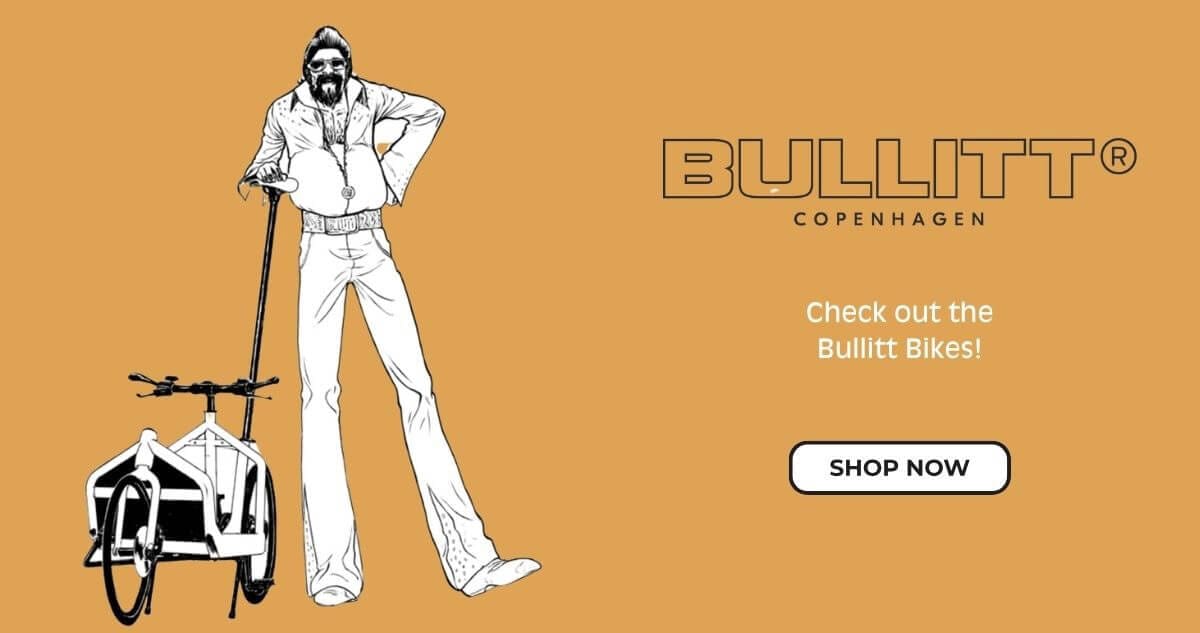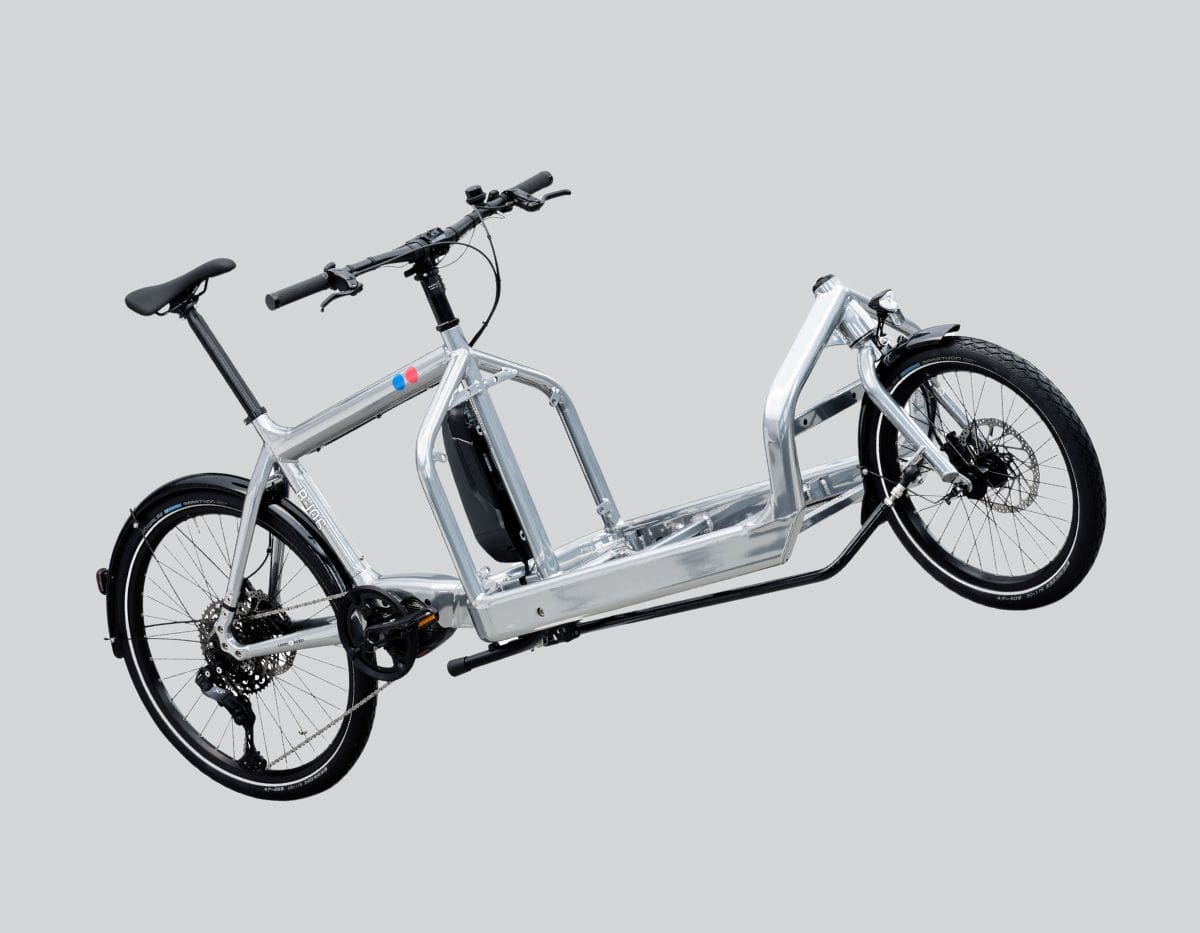Choosing between an acoustic and an electric cargo bike comes down to understanding how you ride, what you carry, and the terrain you face. Some riders only need a bike for short, everyday trips; others regularly carry heavier loads or tackle steep hills. The right choice is less about trends or technology and more about matching a bike to your daily life—so it feels effortless, efficient, and enjoyable every time you ride.
What an E-Bike Actually Does
At their core, an electric bike does two things better than an acoustic bike: they flatten hills and they shrink distances. But, when it comes to electric cargo bikes specifically, the primary job of the motor changes. Its fundamental duty is to neutralize weight. You see, unlike a regular bike, a cargo bike can carry up to 200kg. 440lb!! That means the motor’s main role is to make all those groceries and Home Depot runs feel invisible.
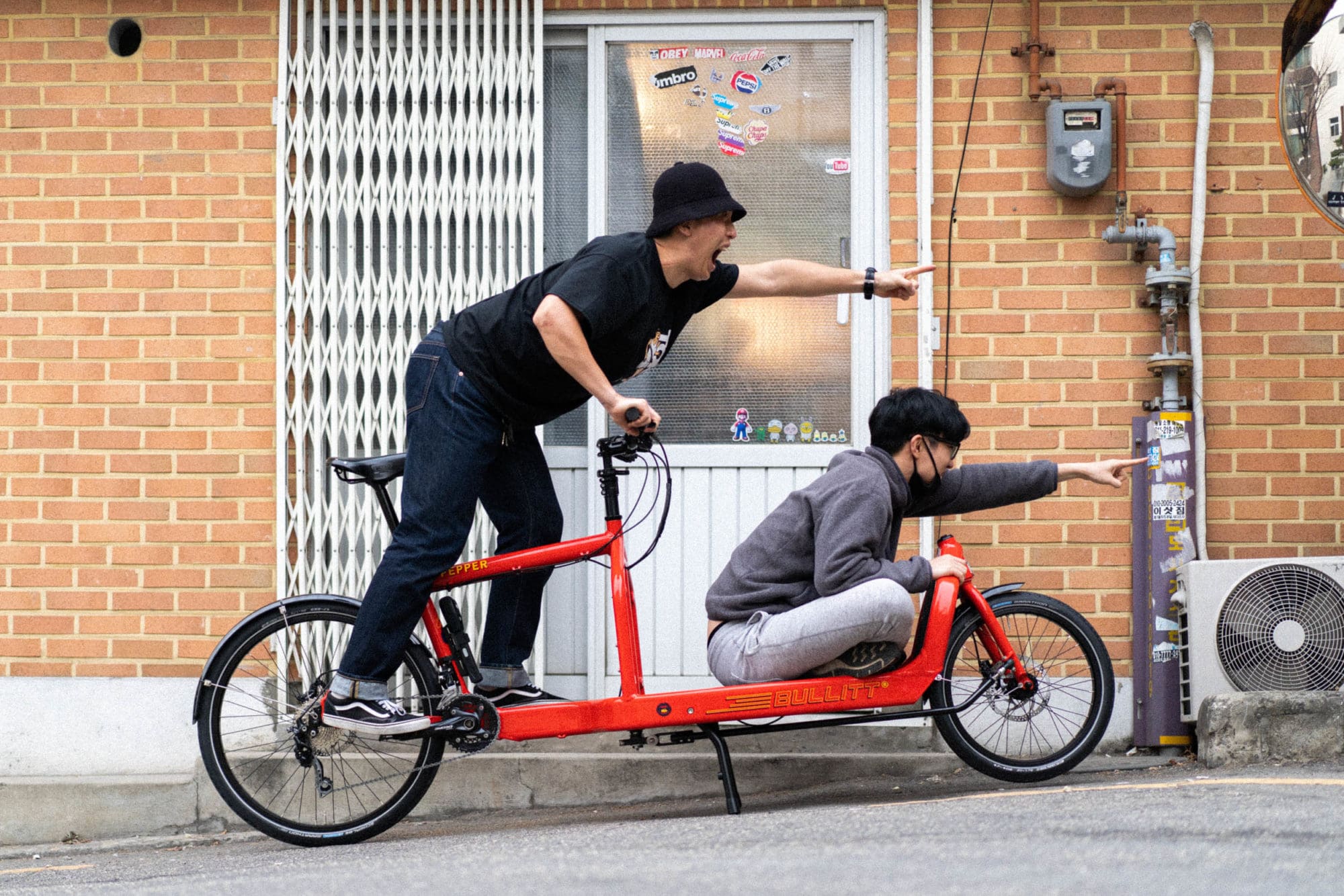
Of course, once weight is neutralized an electric cargo bike will also flatten hills and shrinks distance like all electric bikes. But, there’s also one other – often unconsidered – advantage of an electric bike: it means you can arrive at work without being layered in sweat. On hot and sticky August days, that matters.
Buying What You Need
The trap that many fall into when buying a cargo bike is buying more cargo bike than they need. If you live in the so-called “last mile” or any place with a high property walk score, then you already know that most distances are too close to drive, and too far to walk. And, since these kind of distances represents the majority of your trips (if you live downtown, not in the suburbs), this is where a cargo bicycle works its magic. In short, if you live in the suburbs, a car makes sense to get downtown. But, if you work, live and play downtown, a car only makes sense when you’re getting out of town. A cargo bike, in other words, is your “primary car.”
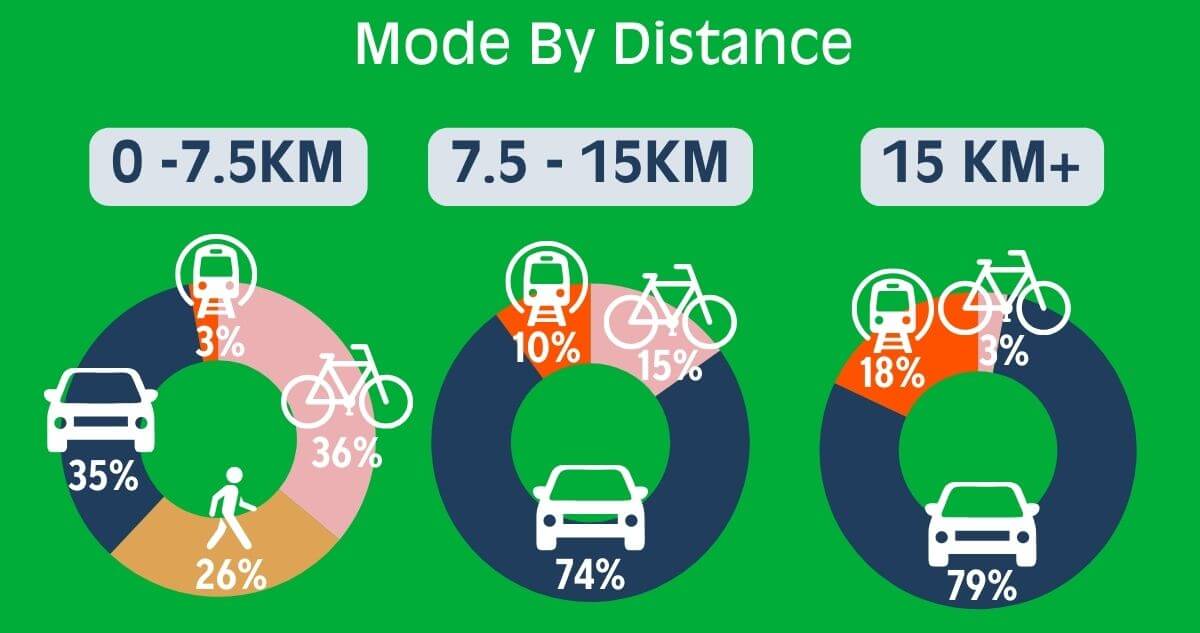
Want an idea of how this looks? Above is a graphic that shows how the Dutch divide their different modes of transport. Used in the last mile – or any distance under 7.5km – a cargo bike becomes your “primary car.” Trips in the last mile may not represent the highest kilometers per year but it does constitute the majority of trips. If you live in the last mile, you only use a car for trips that are too far too bike. So, if that’s the stage you’re on, then chances you don’t need a cargo bike with 200km of electric range, high maintenance suspension systems, and a lot of extra weight. In fact, if you’re living in the last mile, you might not need an electric cargo bike at all!
What Counts as “Load”?
Now that we have distance established it’s good to define cargo bike load. Yes, most cargo bikes can carry 200kg, including the rider. But, this is hardly a normal days load. Thus, it’s quite helpful to define what a “moderate load” is. For most urban families, a typical grocery run is about 25lb, and a kid weighs about 65lb—one six-year-old or two toddlers. Now add the average (male) rider at 200lb. That’s about 130kg. And, that’s your baseline moderate load. An acoustic cargo bike is well within its element here.
Steep Hills
Ok, so let’s say you ride primarily in a distance that we call the last mile and let’s say you carry moderate loads. A new question emerge: what if within this 7.5km range you have some monster hills? Well then, that’s where things can change!
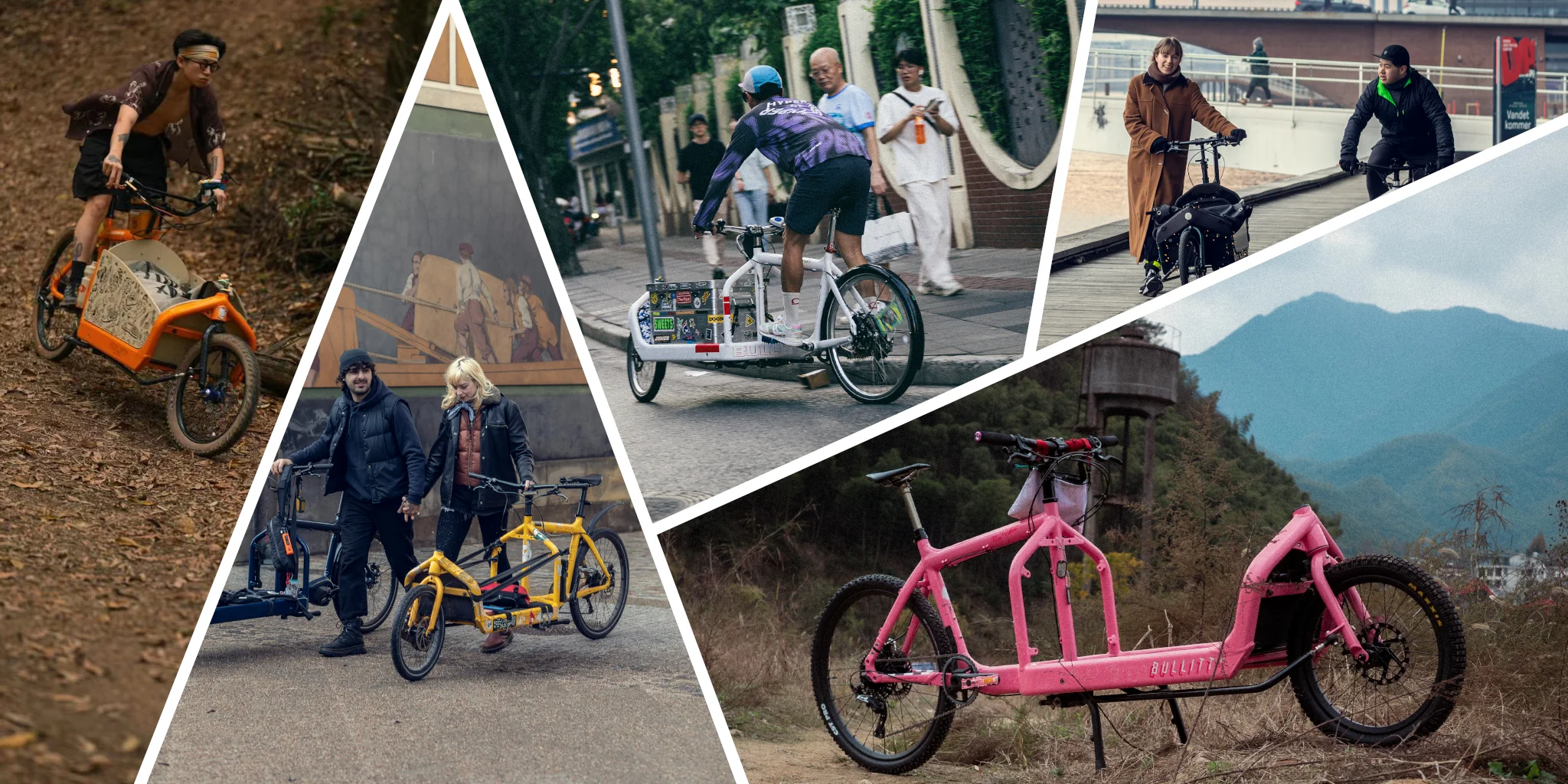
For any bike, a 0–3% grade is considered flat, a 4–6% grade is considered moderate, and anything higher is considered steep. So, if you’re regularly carrying over 90lb (moderate kid + groceries) up hills steeper than 6%, then an electric cargo bike starts to make sense. This is especially true if getting-there-quickly—not fitness—is your goal.
The Lightweight Champion
And so, we’re beginning to see some guidelines emerge. The first rule is: if the majority of your trips are under 7.5km, the terrain is relatively flat or moderately hilly, and your load is under 90lb, an acoustic cargo bike is absolutely perfect. Add in steeper hills or heavier loads, and that equation begins to shift toward electric. Not because the acoustic bike can’t do it—but because you might not want to arrive sweaty and exhausted. Especially if you’re headed to the office.
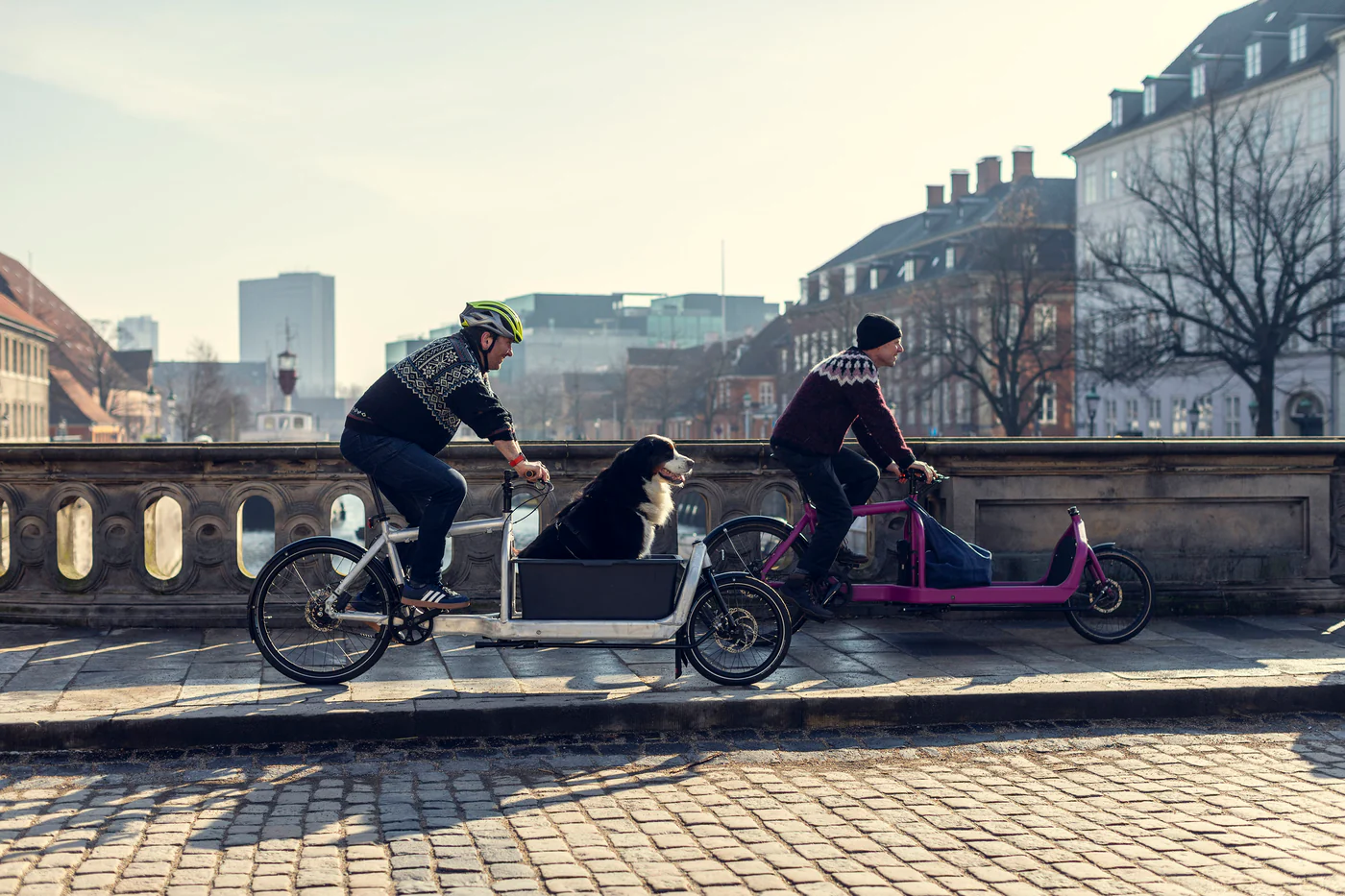
On that note, sweat correlates directly with hills and weight. So: higher grades and heavier loads? More sweat. The electric cargo bike solves that equation. But if you’re the kind of person who welcomes the ride as your workout, then breaking a sweat might be the point. After all, gym passes are expensive. Whereas when you do the math, Cargo bikes are not.
Bicyclist or Cyclist?
This distinction between a sweat-loving cargo cyclist and sweat-free cargo cyclist opens up a new set of distinctions. At Pedaal, we always think of a bicyclist as someone who uses a bike primarily for transportation, whereas a cyclist is more sport-identified. A cyclist might wear lycra and bring a change of clothes to work. A bicyclist might bring their laptop and coffee. So, if you’re a bicyclist in the last mile with moderate hills and moderate loads, an acoustic cargo bike fits your needs. It’s only when those loads and grades climb that a cyclist might stay acoustic and a bicyclist might go electric.
Lifetime Companion
The underlying rule is that the cargo bike itself should be lightweight – especially if you buy an acoustic cargo bike.
A lightweight bike that can carry 200kg is always better than a heavy cargo bike with the same capacity. Babboe’s acoustic bikes, for instance, started at 140lb and were recalled for breaking under their own weight. Bullitt bikes, starting at just 45lb, are still used by DHL and FedEx globally. The lighter your bike, the easier it is to ride—with or without cargo.
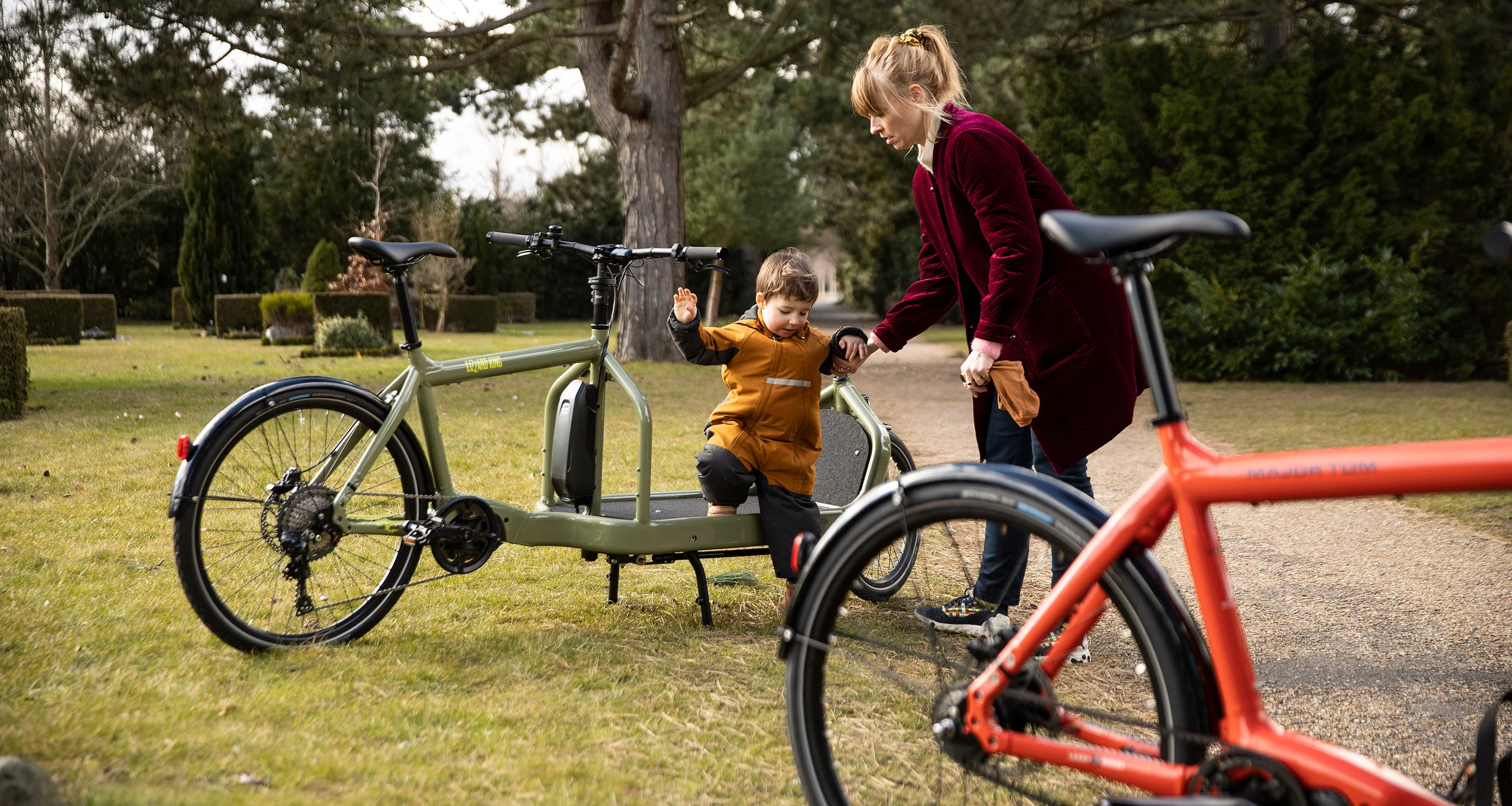
The same logic applies to electric cargo bikes. If the motor’s job is to cancel out weight, then a lighter frame gives you more performance per watt. That means more efficiency and more range. That’s why a Bullitt – starting at just 55lb – is so beloved. It’s the only cargo bike on the market that is fun to ride as a regular bike. And, with plug-and-play modular boxes, a Bullitt transitions easily from single-life to family-life to post-kid-life.
Thinking Beyond the Work Week
Ok, so an acoustic cargo bike can handle trips within the last mile so long as we aren’t riding cinder blocks up monster hills. But, what if you want a bike that can stretch into weekend adventures? That’s when things get interesting! After all, a lightweight cargo bike doesn’t just efficiently tackle the day-to-day, it also stretches your imagination. Trips to the beach? Sure. Ride through the ravines? Check. Overnight camping trip? Longer bike tours? People do this!
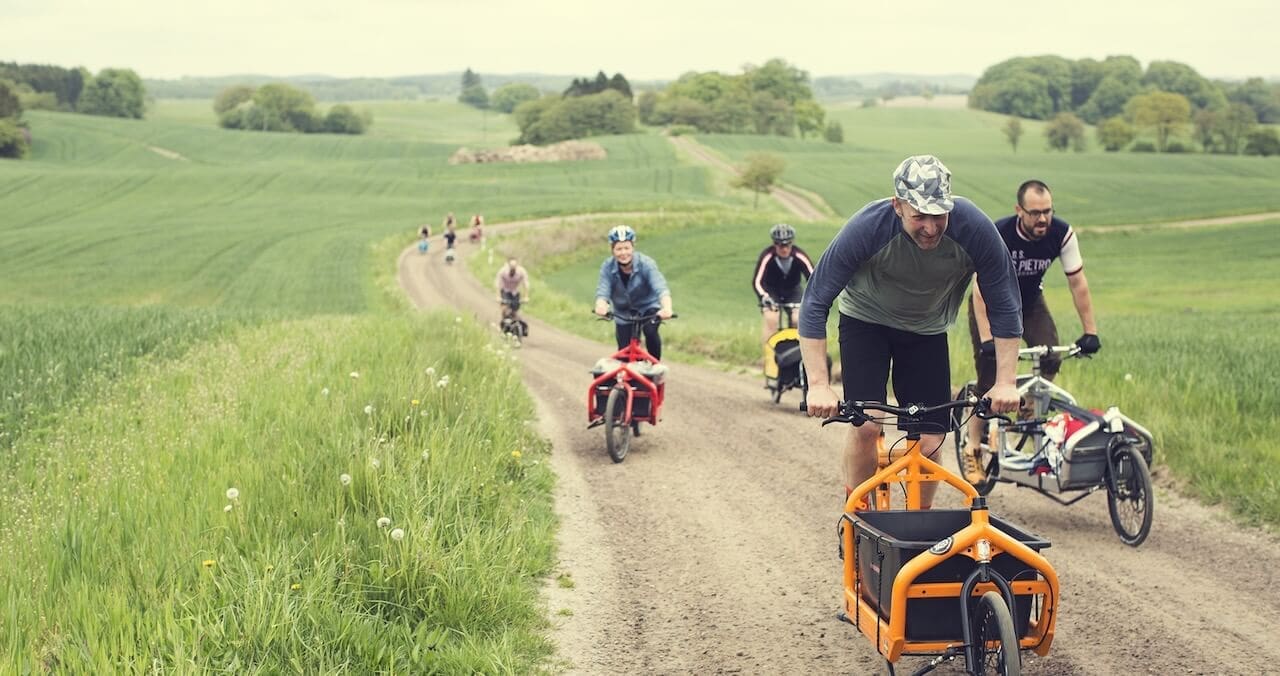
Reality Check
Ok, right. So, now you’re dreaming about big offroad adventures, overnight cargo bike camping trips, and etc.. Alongside this, the budget is suddenly blowing up. That’s why a reality check is important. If it all comes down to budget then consider this: longer weekend rides are more accessorial than essential when buying a cargo bike. After all, the daily work of a cargo bike is lived in short “last mile” trips. If your main focus is handling the majority of your trips economically and efficiently – and the hills aren’t too high and the loads still moderate – then an acoustic bike helps you save money for new adventures.
Gearing Up
So, let’s say you’re veering towards an acoustic cargo bike. The biggest question (before choosing your colour – the hardest part!) is what gearing you will go with. Bullitt offers both internal and external gearing options. Simply put, if your riding is mostly flat, light, and local, internal gears are perfect. The advantage of internal gears is that they are also remarkably low maintenance, since the gears are sealed inside the hub of the wheel.

On the flip side, if your daily ride includes steeper hills, then we recommend external gearing. Again, acoustic bikes are great if the weight is moderate, and gearing comes down to climbing range and your willingness to sweat.
Gearing Choice
If you’re thinking of internal gears then Bullitt offers two choices, both which use the Shimano Alfine 8 internal gear hub. This hub offers a range of 306%; pretty good for most moderate hills unless the load is getting heavy. And, it’s really low maintenance, especially if you are an all-season rider. One system uses a chain and the other uses a belt drive. This comes down to a ratio of laundry cost versus bike cost. The chain system is the most economical, but you’ll have to tie your dress or roll up your pants. The belt drive is oil-free and can run for a whopping 40,000km. But, it costs more. A lot more.
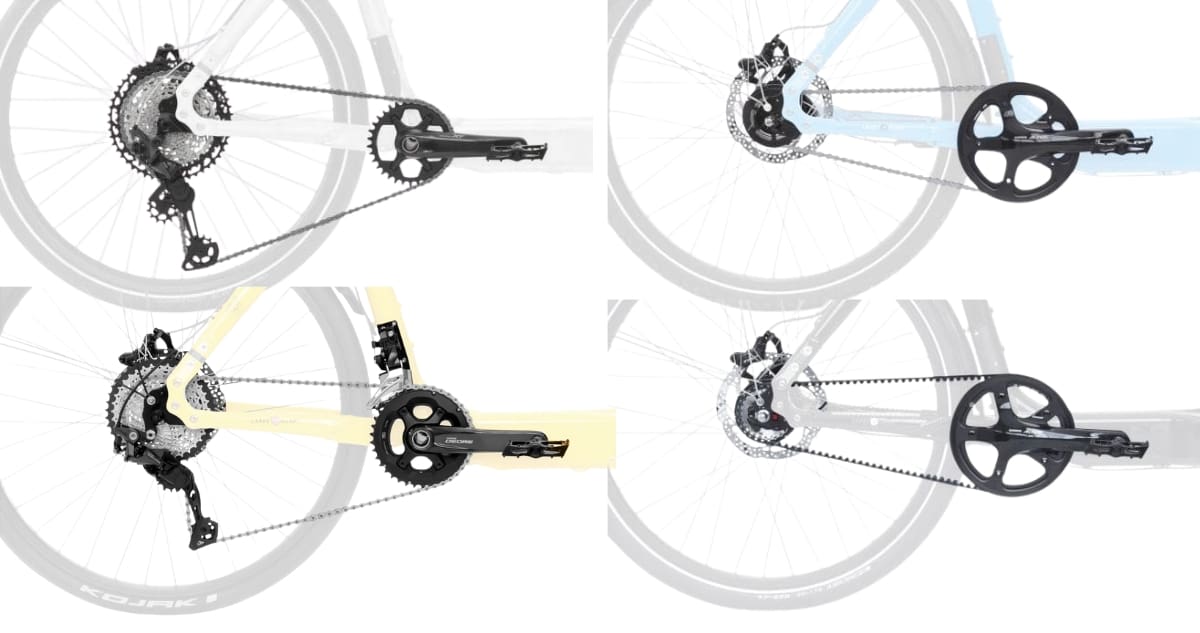
With the external systems, the climbing range increases a lot. Here also Bullitt offers two systems. The Shimano Deore system offers a 511% range while the XT system – which costs more money – offers a 528% range. The big difference here is maintenance and simplicity. The two systems are relatively matched as far as range goes, but the Deore system uses two derailleurs which feels more complicated and certainly doubles the maintenance of the XT system. With the XT system, there is only one shifter and derailleur; that means that all the gears are in one controller and laid out intuitively. If you’d like to read more about gearing, check out this article.
The Last Mile is the Only Mile That Matters
In Denmark, where the cargo bike was born, the focus has always been on utility over excess, minimalism over maximalism. Bullitt designs for the last mile because that’s where city life actually happens. The errands, the school runs, the coffee dates, the unexpected joy of rolling through your neighbourhood instead of past it. That’s where the Bullitt shines.
So, unless your life regularly pushes past that last mile, you might not need an electric setup. Or, if your life pushes beyond the last mile – and you like to push a bit yourself – then the acoustic Bullitt is a pitch-perfect choice.
Questions about a Bullitt? We can help!





